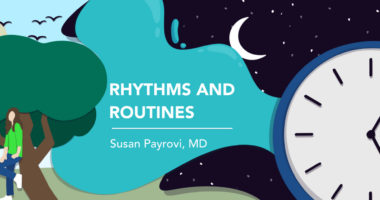MS Patients Have Higher Burden of Mental Disorders, French Study Finds

People with multiple sclerosis (MS) have a higher burden of mental disorders than healthy people or people with rheumatoid arthritis, a French population-based study suggests.
The study, “Prevalence of mental disorders is higher in patients with multiple sclerosis than in the general population or in patients with rheumatoid arthritis in France,” was published in the Multiple Sclerosis Journal – Experimental, Translational and Clinical.
Mental disorders have been reported to occur more often in MS patients. They can have an impact on several factors in an MS patient’s life, including increasing the risk of disability progression, lowering quality of life, and affecting the ability to adhere to treatment, including disease-modifying therapies (DMTs). But few studies have addressed the issue of mental disorders in MS patients specifically in the French population.
To address this, a group of researchers in France assessed the prevalence of mental disorders in MS patients compared with healthy people used as controls and people with rheumatoid arthritis (RA).
The prevalence of mental disorders was analyzed using randomly selected population data from the National Inter-Scheme Information System on Health Insurance from 2011 to 2015.
For each MS patient, up to five healthy controls and one RA patient from the general population were included.
An initial analysis compared 1,145 MS patients (median age of 50 years) with 5,725 age-matched healthy controls. In a second analysis, 878 MS patients (median age of 54 years) were matched by age to 878 RA patients.
Of the MS patients, 1,006, or 87%, were considered to have long-term MS, with a mean duration of 10 to 11 years, according to the International Statistical Classification of Diseases and Related Health Problems 10th Revision Version. Roughly half of the patients, or 548, received treatment with at least one DMT over the study period.
The prevalence of mental disorders was 2.7 times higher among MS patients than healthy controls — 37.3% vs. 13.6% — a statistically significant difference. The prevalence was also higher than in RA patients but to a lesser extent — 41.1% vs 21.1%, or 1.95 times higher.
Mental disorders had a median duration of eight years in MS patients, seven years in healthy controls, and 5.5 years for RA patients. MS patients also were admitted to the hospital due to mental disorders significantly more often than healthy controls, 9.8% vs. 3.1%, and for longer, a median stay of 5.5 days vs. 3.2 days. Similar results were seen when compared with RA patients.
Mood disorders were the most frequent diagnosis across all three groups.
Medicines prescribed to treat mental disorders, such as anti-epileptics, antidepressants or antipsychotics, were the most common factor for identifying people with these conditions, with MS patients more often prescribed these type of medicines (33%) than healthy controls (11.7%) or RA patients (18.5%).
The number of medicines given per patient did not differ between the three groups. A general practitioner was the most common prescriber — in approximately 77% of all cases — but in MS patients, 13% of the prescriptions were from a neurologist. Psychiatrists were the second most common prescriber of these medicines, with 20% prescribing to healthy controls, 15% to patients with RA, and 5% to MS patients.
General practitioner consultations were higher for MS patients than healthy controls, a median of 25 versus 19, but even higher for RA vs. MS patients, a median of 30 versus 26.
When accounting for gender, men had a higher prevalence of mental disorders than women, a phenomenon seen across all three groups. In terms of age, MS patients 40 years old or younger had higher rates of mental disorders than healthy controls. A higher prevalence was also seen among MS patients older than 60 compared with RA patients.
Overall, the findings suggest that “MS patients are at a higher risk of [mental disorders] than the French general population or RA patients,” the researchers wrote.
“The management of [mental disorders] for MS patients is therefore of high importance and should be systematically screened in order to reduce the consequences of such comorbidities in the management of MS,” they concluded.






